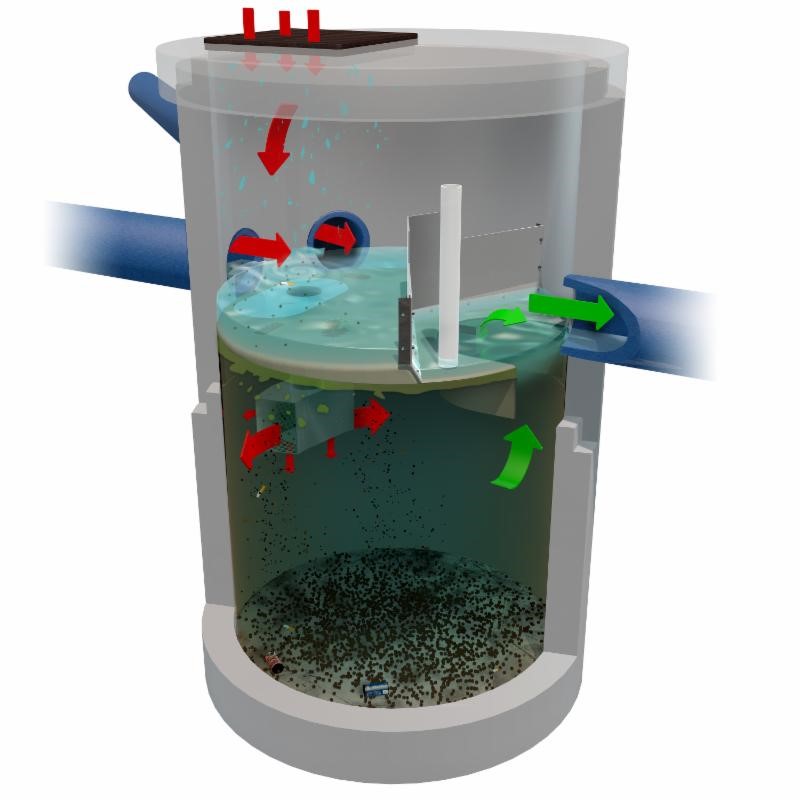Imbrium Systems and its Stormceptor licensees have announced the release of their newest stormwater treatment technology, the Stormceptor EF (Enhanced Flow).
Stormceptor EF is a continuation and evolution of the company’s oil grit separator (OGS) stormwater treatment technology. The enhanced flow Stormceptor removes and retains pollutants, such as sediment (TSS), free oils, gross pollutants from stormwater and snowmelt runoff at higher flow rates than other oil grit separators.
“Back in the early 90s, oil was the primary focus for small industrial sites, having issues with release into streams and into the lake. At the same time, both the Canadian and U.S. governments realized that we have to capture this pollutant laden sediment,” said Scott Perry, director of Imbrium Systems, to Water Canada. “From there the market took off.”
Perry told Water Canada that the Stormceptor EF and EFO—which is optimized for oil capture—represent years of refinement. The company wanted the new design to go to market earlier, but they put it through repeated testing and design to maximize its effectiveness.
“We’re really excited,” said Perry. “We’ve identified ways to further improve the technology with the Stormceptor EF, higher flow rates, high levels of oil capture and sediment capture, as well as protecting what’s been previously captured, preventing scour.”
Perry sees the high-level testing and functionality of stormwater capture technologies as imperative given the changing environmental needs and requirements. “One of those drivers is intense storms, knowing that they’re a concern, and that they will continue to occur more frequently, which means that we really have to enhance the Stormceptor, which we’ve done.”
The Stormceptor EF has been third-party performance tested by Good Harbour Laboratories whose results are under technical review at the Toronto Region Conservation Authority (TRCA). Testing was to verify the technology’s capability for sediment removal, scour protection, as well as oil capture and retention.
“We’ve been focused on trying to maintain all the characteristics of Stormceptor with this new product line, but expand upon them, and we feel very confident that we’ve done that with the performance testing conducted here at Good Harbour Labs,” Perry said.
In August, the company’s Jellfish filter achieved ISO 14034 Environmental Management — Environmental Technology Verification (ETV), which was also validated by TRCA. “Anytime there’s a required test process or procedure, it’s a good thing for the industry, it helps raise the bar for anyone in this technical space,” said Perry. “It’s a benefit to the civil engineers. It’s a benefit to the regulators that are wanting to see an improvement to the water quality; it’s a benefit to the community.”
Stormceptor EF is also intended to offer engineers greater design flexibility by accepting flow from a single inlet pipe, multiple inlet pipes, and from the surface through an inlet grate, while also accommodating a 90-degree inlet to outlet bend angle, and can operate in tailwater conditions.
More information about the technology is available on the company’s website.










